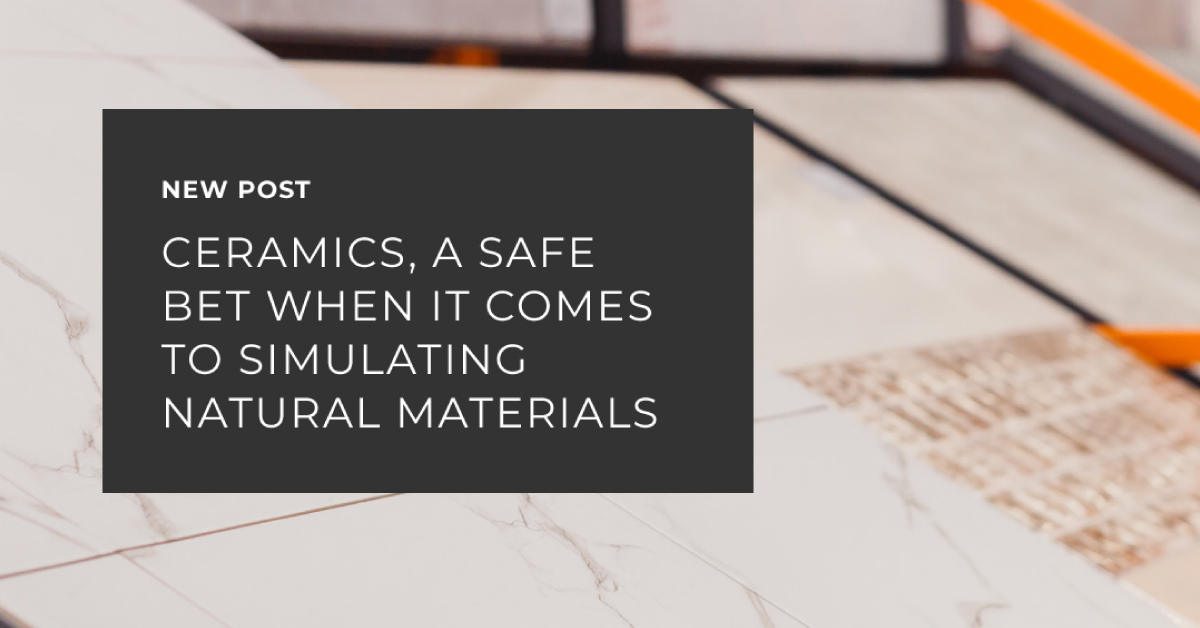Ceramics, a safe bet for simulating natural materials.
Ceramics can reproduce stone, marble and even wood.
Gres and porcelain are two ceramic materials which, due to their technical advantages, such as their resistance and easy cleaning and maintenance, are an ideal option to achieve realistic imitations of certain natural materials, such as wood or marble. These raw materials are not only more expensive than the ceramics they require, but also need a more costly and delicate care.
Wood is one of the most popular materials for wall and floor tiling, but especially for house floors, because of its warmth and beauty. However, it has a major drawback, which is that it requires very delicate maintenance and cannot be used on all surfaces, as water, for example, causes the wood to swell.
Ceramics, however, provide resistance, great versatility and an infinite number of wood-effect finishes, with a much simpler maintenance and great resistance and durability.
Something similar happens with marble, a material that, like wood, is more expensive than ceramic, but is also very resistant and does not require such delicate care. However, traditional marble is more expensive than marble-effect ceramic, which is resistant and very versatile. In addition, improvements in manufacturing processes are constantly making it possible to achieve more realistic effects, not to mention finishes such as polishing, which perfectly reproduce the natural shine of marble.
Both ceramic and stone are very hard-wearing, easy to maintain and affordable. Ceramic, however, stands out for its delicate and smooth finish and for its versatility in designs, shapes and colours.
The cement effect is an ideal aesthetic for projects that want to achieve an industrial look in their rooms without sacrificing practicality. Thus, cement-type ceramic is a very good option, as it has a good finish, allows large formats and can be easily cleaned.
Terrazzo is a type of flooring made from pieces of marble that is very decorative and widely used in the more traditional Mediterranean. Although both traditional terrazzo and terrazzo-effect ceramic are quite affordable and both are very resistant materials, it should be noted that ceramic enables the replication of shapes and colours that are harder to achieve, as well as offers greater versatility in its designs.
Ceramic is therefore a material with many technical advantages that is ideal for replicating certain natural materials, which are very delicate, require a higher level of maintenance and are also more expensive. Instead of higher prices and more complicated maintenance, ceramics bring strength, versatility and excellent price-quality ratio for any space.
If you liked our post on “Ceramics, a safe bet for simulating natural materials” you can find more topics in our News section on the web by clicking here.

